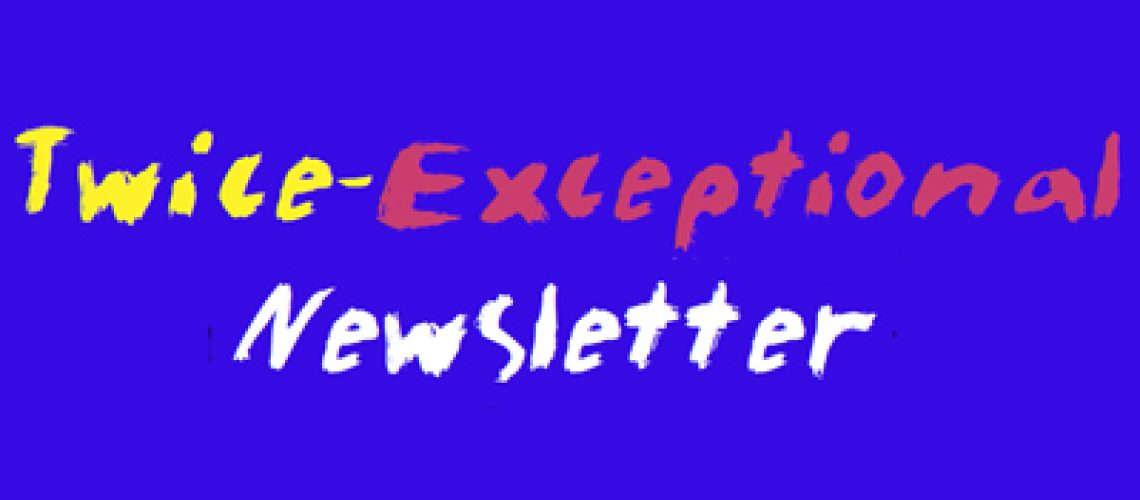This article originally appeared in the May 2015 edition of the 2e Newsletter. Click here to download a copy as a PDF.
Because I work with parents of 2e kids, mentor 2e adults, train educators, and collaborate with mental health and education professionals, I benefit from a unique vantage point that includes many different perspectives on the relationship between educators and parents. What I observe is that if parents and educators agree on a goal with specific action items, the
chance for success increases dramatically. This formula, goal followed by action items, helps focus the conversation and temper emotions that, if left unchecked, may interfere with meaningful progress in the parent/ educator relationship.
The mission statement of my service, With Understanding Comes Calm, outlines goals and action items that serve as starting points for educators and parents to build a successful relationship with one another. These goals and action items provide a springboard for increased success for children. The goals, aimed at empowering parents, educators, and other professionals, are: bringing out the best and raising self-esteem in their children, students, clients, and themselves. We guide them toward achieving these goals through three action items:
- Education about the true meaning of giftedness and twice-exceptionality
- Tailor-made strategies
- Advocacy training
Vision for a School/Parent Partnership
Within this framework of goals and action items, what is a practical vision for a school/parent partnership? We seek a collaborative and open two-way street between parents and educators, where both parties expect support from one another in reaching the agreed-upon goals. In order for this paradigm of respectful synergy to occur, what each side must do is in the table at the bottom of the page.
Recognizing the following three basic facts will help both parents and educators avoid crashes and ensure smooth sailing on this two-way street:
- Parents of twice-exceptional children not only advocate for their kids at school, but often defend their children’s behavior and their own parenting styles to their community and family members. Appreciating parents’ reality and their students’ all-to-often negative experiences requires educators to set their egos aside. Reality for parents of 2e kids is often one of constant
deflection and protection of their children and of themselves. It’s no wonder they often come to a new teacher or a new school year wary of sharing their children’s challenges. - As difficult as history may make it, parents must begin each school year assuming that teachers have their children’s best interest in mind. Teachers want to educate and help their students grow academically, socially, and emotionally; but teachers may not have the training to address underlying causes for challenging or resistant behavior.
- For both parents and educators to achieve the goal of bringing out the best and raising self-esteem in 2e children, they need to internalize the adage “Kids would do well if they could” (Ross Greene, Livesinthebalance.org). No child wants to be “the bad kid” or “that kid.” There must be an innocent-until-proven-guilty mentality. If the child is found guilty, in the case of a 2e child that means we must uncover the cause and then address the lagging skills, the environmental challenges, or the other reasons for the problematic behavior.
Now what? Once goals are set and the outlook is one of mutual and collaborative support, how do we reach those goals? We look to the action items to find direction. As mentioned earlier, the three action items are: education, strategies, and advocacy.
Action Item: Education
Understanding what a particular 2e child needs takes a strength-based approach and positive reframing of challenges. Both require work ahead of time — finding and sharing resources. As we all know, once you’ve met one 2e child, you’ve met one 2e child; and the strengths and challenges of these children change over time. For example, an introverted 2e child has very different needs from an extroverted 2e child.
While we can think of behavior as communication, in the case of 2e children the behavior doesn’t always help us understand what lies behind their reactions. However, learning about a child’s profile allows us to reframe the behavior, to see the positive side, to acknowledge and validate challenges the child faces every day, and to address them in a meaningful and effective way. So meeting a 2e child’s requirements to succeed can take a dynamic thirst for information and best practices. Parents and educators must look to each other to find and share resources.
Action Item: Strategies
A variety of strategies are available to try, depending on the category of issues presented. However, there is one overarching strategy that must be in place for all of the other strategies to work: creating a personal relationship. Teachers must nurture personal relationships with their students and with parents of 2e kids. I advise educators to think of this strategy as making a deposit in the Trust bank account with parents.
In order to build this kind of relationship, teachers should communicate positive messages early and often about their student. The first two weeks at school are often referred to as “the honeymoon period,” when things are new and everyone tends to be on their best behavior. This is when short one- or two-sentence emails or a handwritten note in a backpack can say something positive about a student for the parents and the student to see. Catch the student doing well so that when it comes time to approach parents with something challenging, it’s balanced. Parents will know that the teacher recognizes positives in their child and that their child is not purely defined by challenges. As a result, parents will be less likely to be defensive.
Likewise, parents must invest in the Positive Perspective bank account by helping teachers recognize positives in their child. Share specific information: what your child loves and what he is good at. Share photos of your child absorbed in an activity, update teachers when your child achieves a goal — badges in scouts, levels in sports, community service, the first time she makes her bed — anything that will help the teacher relate to your child in a positive way.
Additionally, parents do well to ensure that teachers know when their child is excited about something in the classroom. So often, teachers receive negative feedback or complaints. Telling them that your child is excited about a project or that she shared what happened in the classroom goes a long way in validating the teacher’s efforts. The byproduct is that when parents need to approach the teacher with a complaint or a suggestion to help their child, the teacher has a balanced understanding of the student and knows there are aspects of the classroom experience that the child found positive.
In some cases, educators may need to encourage parents to share information about their child. Parents might have had less-than-positive experiences before and are reluctant to share information about their child with the school. It is the educator’s job to ask parents, “What makes your child tick and what ticks her off?”
Action Item: Advocacy
When putting their heads together, parents and educators should look to a “praise-ask-thank” formula to promote and accomplish their goals:
- Acknowledge what the other person is doing and has done to assist in meeting individual objectives set for your child.
- Make a specific request that you think will further effectuate those objectives and include an offer to volunteer to support the teacher in endeavors to help your child succeed.
- Make sure to communicate genuine appreciation.
Once understanding and strategies are in place, teachers and parents can effectively collaborate on the students’ behalf. This is the gold standard for the parent/ educator relationship; the two-way street reaches its destination when educators and parents come together to advocate on behalf of 2e students.
Parents Should
- Acknowledge the educators’ expertise.
- Express appreciation for the teachers’ experience and a willingness to rely on their wisdom.
- Recognize that expecting the worst serves to undermine reaching important goals for students.
- Share information about their child that helps to craft action steps necessary for their child to succeed.
- Avoid the “I hope this year will be different” or “If I don’t tell them, maybe they won’t notice” wishful thinking.
Educators Should
- Consider parents their best allies and most reliable information source.
- Set aside the notion that asking parents for their opinion or suggestions implies ignorance or invites “helicopter” parenting.
- Set up a dynamic where parents feel safe in sharing important and private information about their child.

Author: Julie F. Skolnick M.A., J.D.
Julie Skolnick, M.A., J.D., is the Founder of With Understanding Comes Calm, LLC, through which she passionately guides parents of gifted and distractible children, mentors 2e adults, and collaborates with and advises educators and professionals on bringing out the best and raising self-confidence in their students and clients.


